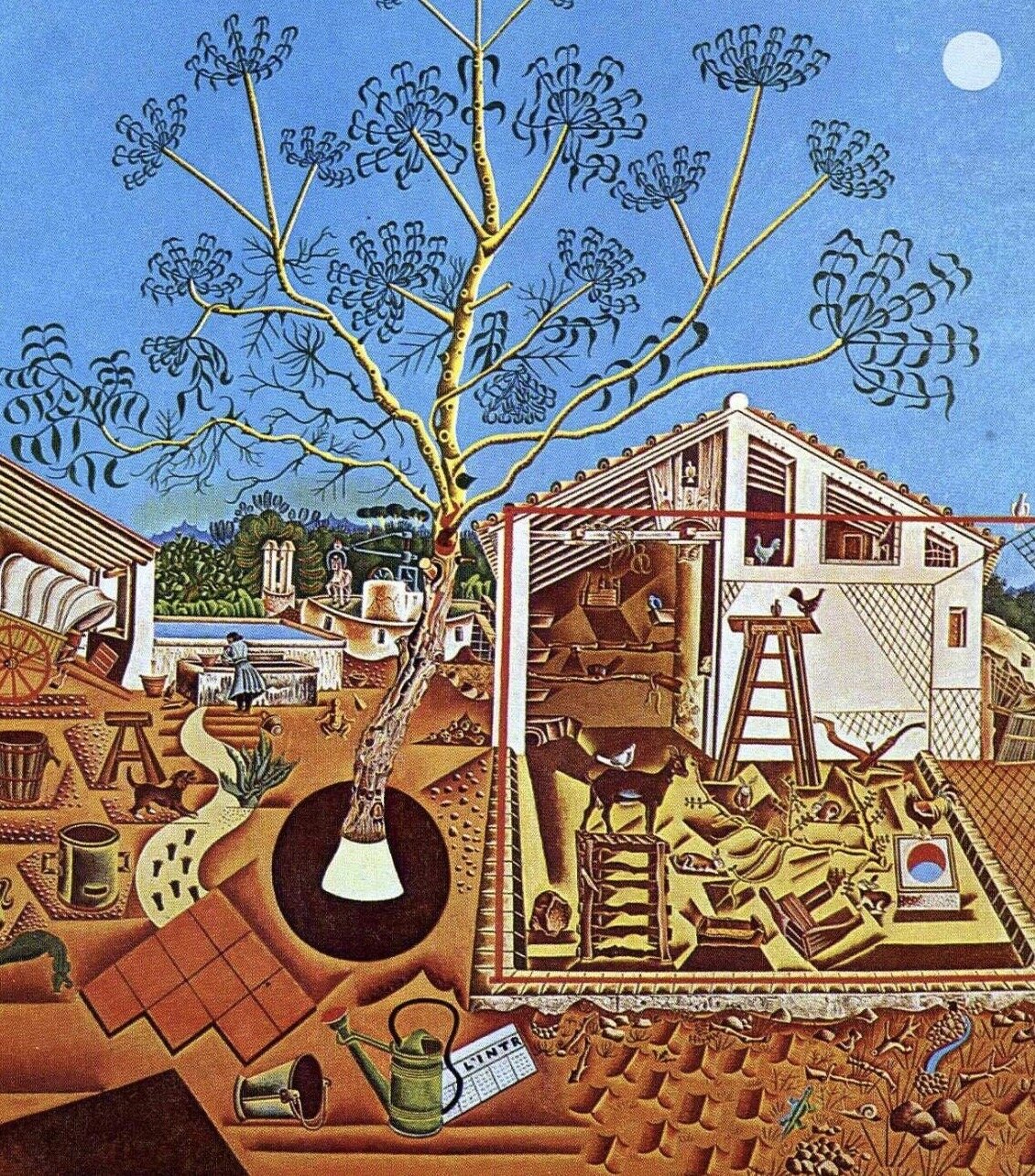On first seeing La Masia (The Farmhouse) by Joan Miró i Ferrà – incorrectly translated as “The Farm” in English publications – I was transfixed. It spoke to me like none of Miró’s other paintings. It was personal: within the picture were images from my childhood in Spain. As I studied it, remote memories took form and engendered an inner calm.
I was born in 1950 in Lleida in the northeastern region of Spain called Catalunya. While I grew up in this ancient city, my affinity for the countryside took root in nearby Borges Blanques, my mother’s hometown. Occasional trips through the surrounding landscape expanded my awareness. Those formative years before I moved to the US at the age of seven left a lasting impression.
La Masia
Joan Miró i Ferrà was born on April 20, 1893, in Barcelona, Spain. In 1911 his parents bought a farm in Mont-Roig del Camp, a historic Catalan town near the city of Tarragona on the Mediterranean coast. The many summers Miró spent at Mont-Roig inspired his first “masterpiece,” La Masia, which he painted in 1920-1.
Detail of La Masia by Joan Miró
Among the first elements one encounters on viewing La Masia are the arid, ruddy-red soil, and the central spindly eucalyptus tree. Anchoring the scene, they provide an ideal setting for the items strewn about: a bucket turned on its side, a watering can just in front of a tally sheet, a dog baying at the moon. Within the fenced structure on the right are a goat, a rooster, a plow, a bucket, a ladder, and other constituents of an active family farm.
In the distance, to the right of the farmhouse, is a raised rectangular pool, similar, to the one located in my family's walled orchard on the outskirts of Borges Blanques. In front of the main pool in Miró’s painting is a smaller one where a woman washes clothes.
Beyond the pools is a well: together with sun and soil, the farm’s lifeblood. While silty brown canal water supplied our Borges Blanques pool – which as children we cheerfully splashed in – the pool at Mont-Roig was likely filled with clear well water.
To the well's right is a horse mill, which is possibly engaged in grinding corn, a crop prominently represented in La Masia by the large corn stalk in the foreground.
The Farmhouse
The most resonant component of Miró’s painting, is its namesake, the masia or farmhouse. Inspired by ancient rural Roman mansums (villas), masias originated in the 12th century in the Crown of Aragon, a confederation of kingdoms including Catalonia, Valencia, Aragon, Languedoc, and Provence in northeastern Spain and southern France.
Often rectangular, masias are solidly constructed, their thick walls made from materials available in the region: stone and mortar in the "pre-muntanya" (pre-mountain) and mountainous areas, or adobe where stones are scarce. Roofs are slate in the mountainous regions, while those in the lower areas, as in the Miró family masia, are composed of tiles. While some masias are two stories in height, the prototypical design is three floors, each with a specific function.
In the three-floored farmhouse, the ground level is reserved for the livestock, or, as seen in the entrance of the Miró masia, the family horse. A stairway within the first level ascends to the living quarters on the second. The upper level attic, although occasionally serving as a pigeon loft, is commonly used for drying and storing crops.
Finally – beyond the design - is the masia’s alignment to the rising sun. In La Masia, Miró’s precise shadows from each planting row pull the viewer into the image and create rhythm and depth. We see the farm from a southern view, bathing in the warmth of the sun.
Finding A Buyer
Despite the coherent historical image it captured, La Masia languished without a buyer. According to The Art Story:
“One dealer suggested cutting it into several smaller paintings for ease of sale. Fortunately, the artist had become friends with the writer Ernest Hemingway, then a struggling unknown, and, after hours of working the two would meet for boxing sessions to unwind. Hemingway was determined to buy The Farm and, after borrowing money and working as a grocery clerk, was able to purchase it and kept it throughout his life. As he wrote: “I would not trade it for any picture in the world. It has in it all that you feel about Spain when you are there and all that you feel when you are away and cannot go there.”
In 1987, Ernest’s widow, Mary Hemingway, gifted La Masia to the National Gallery of Art in Washington D.C. There, the mid-morning sun continues to illuminate a time and place in the Catalan countryside. Spending summers at Mont Roig until 1976, Miró’s spirit was nourished by country living. He absorbed it, painted it, and shared it. Speaking to a journalist in 1928, Miró reflected:
"It is the summary of my entire life in the countryside, one period of my work and a point of departure for what was to follow."
Comments, suggestions, and corrections are welcome.


